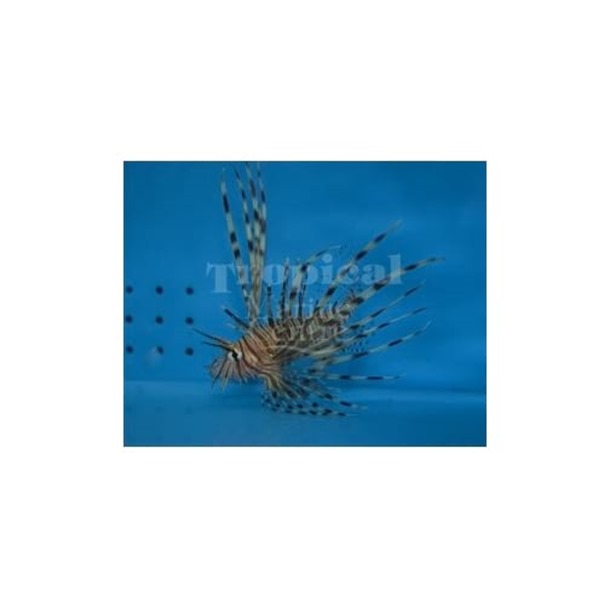Volitans Lionfish
You will earn 34 Points
The Volitan Lionfish colouration can vary depending on the age and maturity of the fish, displaying a red to burgundy, white, and brown to black vertical stripes along the length of the body. It also has large, fan-like pectoral fins, and tall, banded spines on the dorsal fin.
The spines on the dorsal, pelvic, and anal fins are venomous, and used solely for defense. If stung, the affect is similar to a bee sting, only stronger. Lionfish venom contains proteins that are broken up by heat, which prevent them from entering the bloodstream. After a sting, remove any broken spines lodged in the wound, and immediately immerse the affected area in the hottest water you can stand (not scalding), for 30 minutes, followed by medical attention. For individuals sensitive to stings, its advisable to seek medical attention immediately.
The Volitans Lionfish can grow rapidly to full adult size, and when full grown these fishes should be housed in an aquarium with numerous hiding places. It will hide while acclimating to its new home, but then is generally found out in the open. It may eat smaller fish, shrimp, and other crustaceans in the tank.
When first introduced into the aquarium, live feeder shrimp should be used to entice this fish to eat. Its diet should include meaty foods such as live shrimp, fish, and occasionally crustacean flesh. Once fully settled into the aquarium, with some diligence and patience, Volitans Lionfish can convert over to consuming a prepared diet consisting of chunks of fresh, shrimp, fish, and pieces of squid.
The Volitans Lionfish is Reef Safe with caution as they will prey on any small fish or crustaceans that will fit inot its mouth, however they will not harm any corals.
The Volitans Lionfish is very similar to the Miles Lionfish with the exception of their origin. The Volitains Lionfish differs from the visually similar Miles Lionfish, as Miles have fewer spines on its dorsal and anal fins.



